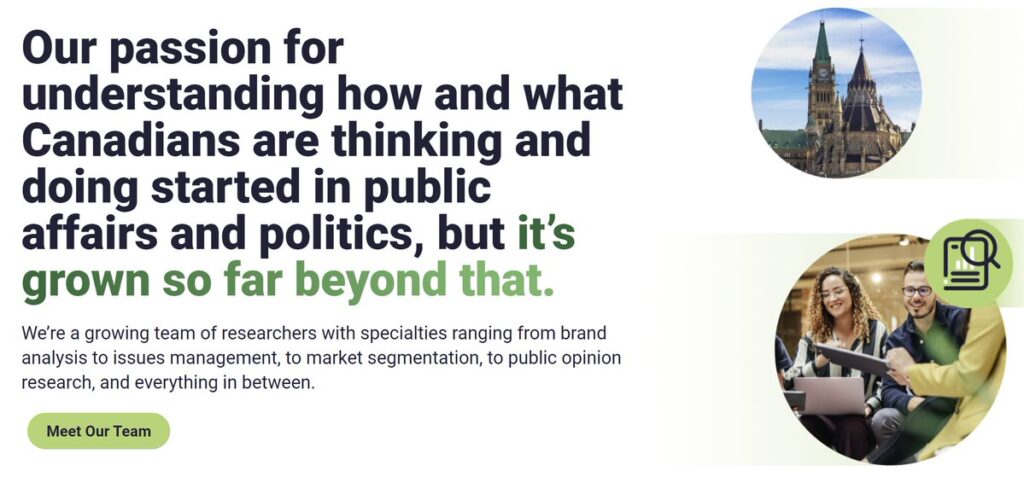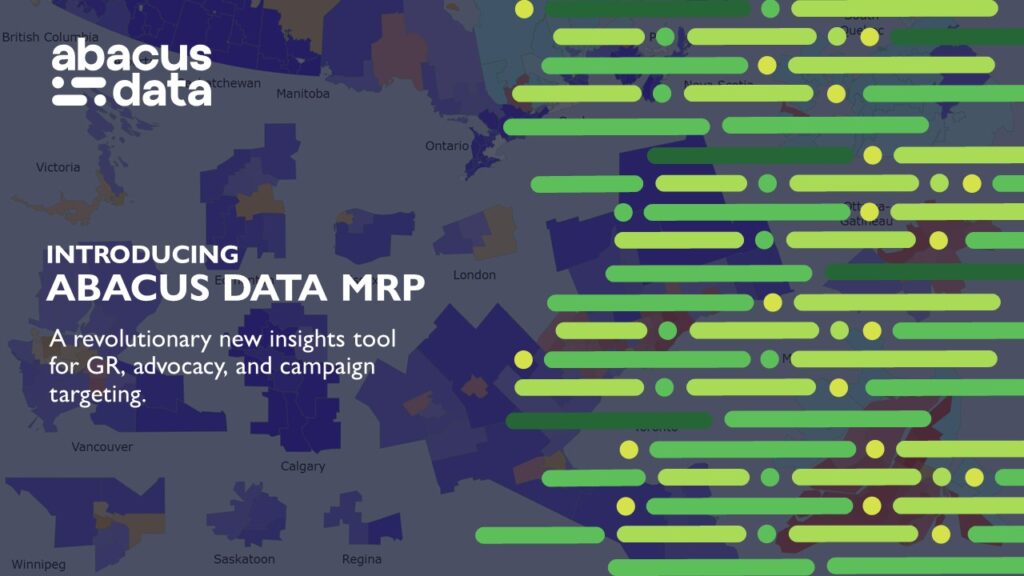Abacus Data Ontario Poll: Ford Government Approval Hits New High; PCs lead by 21
In our first survey of Ontario public opinion since the February provincial election, we find Premier Doug Ford and the Progressive Conservatives in an enviable position. With a solid majority under their belt, a largely disinterested opposition, and a public more preoccupied with economic uncertainty and global affairs than provincial scandal or friction, the Ford government is benefiting from both competence perceptions and a remarkably quiet political environment.
The numbers speak for themselves. If an election were held today, 49 percent of committed voters in Ontario say they would vote for the Progressive Conservatives, up four points since the last survey we conducted just before the election in February. The Ontario Liberals sit at 28 percent, down slightly by one point, while the NDP has fallen to 14 percent, a two-point drop. The Greens hold steady at 5 percent, and other parties account for 4 percent.

These are not small margins. A 21-point lead over the second-place Liberals is rare in any political context. But for a third-term government battling economic insecurity, it is even more remarkable.
Ford’s Approval Hits a High
When we look beyond vote intention to overall job approval, the results are equally impressive. Today, 44 percent of Ontarians approve of the job Ford and his government are doing, up two points since our January tracking and the highest we have measured since August 2023. Disapproval stands at 31 percent, down three points from earlier this year.

The trend line tells the story. Since late 2023, Ford’s approval numbers have steadily improved. After dipping in the fall, evaluations of the Premier and his government began to recover just ahead of the February election. Since then, they have continued to climb. What we are seeing now is the best standing for the Ford government in nearly two years (and likely since it was elected in 2018).

The Coalition Behind the Lead
The PC advantage is broad and deep. They lead across all regions of the province. In the GTHA, where elections are won and lost, the PCs are at 50 percent, with the Liberals at 31 and the NDP at 12. In Southwestern Ontario, the PCs dominate with 59 percent of the vote compared to 20 percent for the Liberals and 11 percent for the NDP. In Eastern Ontario, the PCs are at 50 percent, with the Liberals at 27.

Demographically, the PCs lead among men and women, with a particularly strong lead among those aged 45 to 59, where they command 60 percent of the vote. Among voters over 60, they still lead comfortably, while among younger voters aged 18 to 29, the race is tighter: the PCs sit at 42 percent, with the Liberals at 33 and the Greens at 9.

This suggests a strong generational dimension to Ford’s support: older Ontarians, likely more focused on economic and geopolitical stability, are sticking with the government. Younger Ontarians, while less hostile to Ford than in the past, are more fragmented in their preferences.
Ford’s Personal Brand Is Firming Up
Doug Ford’s personal ratings are also improving. Today, 44 percent of Ontarians say they have a positive impression of the Premier, while 33 percent view him negatively, giving him a net impression of +11—the highest of any provincial party leader.

By comparison, Bonnie Crombie’s net impression is -2, with 31 percent positive and 33 percent negative. Marit Stiles sits at +3, but a large share of Ontarians say they don’t know enough about her to say. Mike Schreiner of the Greens has a similar profile: mildly positive impressions, but low visibility.
This makes Ford, by far, the most defined political brand in the province. Ontarians know who he is, and right now, a plurality like what they see.

National Presence, Local Benefit
Some of this goodwill may also stem from how Premier Ford has handled himself on the national stage. In a time when the country is looking for stability, Ford has played a constructive role—forming pragmatic alliances with other premiers, supporting the new federal government’s efforts to strengthen the economy, and positioning Ontario as a leading voice in confederation. For many voters, he appears less partisan, more collaborative, and focused on results. That kind of leadership stands out in today’s political environment, and it is likely adding to his personal appeal and the PC Party’s strength in the province.
What’s Driving This?
Several factors are likely contributing to this political environment.
First, the opposition is divided, uncoordinated, and lower profile. Bonnie Crombie is still defining herself. Marit Stiles remains largely unknown outside of NDP circles. And Mike Schreiner, while respected, has a narrow base. The result is a field of challengers who, individually and collectively, are not posing a serious threat.
Second, many Ontarians are not focused on Queen’s Park right now. They are worried about inflation, affordability, housing, and increasingly, what Trump’s policies could mean for Canada. In that context, the Ford government appears stable, calm, and focused. There is little political drama, few controversies, and no looming crisis. Even some of the friction created by Bill 5 doesn’t seem to have made much impact.
Third, the relationship between federal and provincial politics remains significant. While this survey did not include questions about the federal government specific to Ontario, the Ford government may be benefiting from the increasing popularity of the Carney government – especially as they continue to work together on several fronts.

The Upshot
Doug Ford and the Ontario PCs are in a commanding position. With 49 percent of the vote and the highest approval rating in nearly two years, the government remains in a very strong position, a months after its re-election.
The Premier’s personal brand is firming up. The opposition is stalled. And the public mood is oriented more towards macroeconomic and international concerns than provincial partisanship. That is a recipe for stability, and for now, a government that appears more popular than ever.
Whether this holds depends on what happens next. The economy is still fragile. The housing crisis remains unresolved. And Trump could introduce new anxieties that ripple across all levels of Canadian politics. But for now, the Ford government has time, space, and public goodwill. In politics, that is a rare combination, and one the Premier will no doubt seek to maintain and leverage to push his agenda forward.
Methodology
The survey was conducted with 1,000 eligible voters in Ontario from June 2 to 5, 2025.
A random sample of panelists were invited to complete the survey from a set of partner panels based on the Lucid exchange platform. These partners are typically double opt-in survey panels, blended to manage out potential skews in the data from a single source.
The margin of error for a comparable probability-based random sample of the same size is +/- 3.1%, 19 times out of 20.
The data were weighted according to census data to ensure that the sample matched Ontario’s population according to age, gender, educational attainment, and region. Totals may not add up to 100 due to rounding.
This survey was paid for by Abacus Data Inc.
Abacus Data follows the CRIC Public Opinion Research Standards and Disclosure Requirements that can be found here: https://canadianresearchinsightscouncil.ca/standards/
ABOUT ABACUS DATA
We are Canada’s most sought-after, influential, and impactful polling and market research firm. We are hired by many of North America’s most respected and influential brands and organizations.
We use the latest technology, sound science, and deep experience to generate top-flight research-based advice to our clients. We offer global research capacity with a strong focus on customer service, attention to detail, and exceptional value.
And we are growing throughout all parts of Canada and the United States and have capacity for new clients who want high quality research insights with enlightened hospitality.
Our record speaks for itself: we were one of the most accurate pollsters conducting research during the 2021 Canadian election following up on our outstanding record in the 2019, 2015, and 2011 federal elections.
Contact us with any questions.
Find out more about how we can help your organization by downloading our corporate profile and service offering.











































































